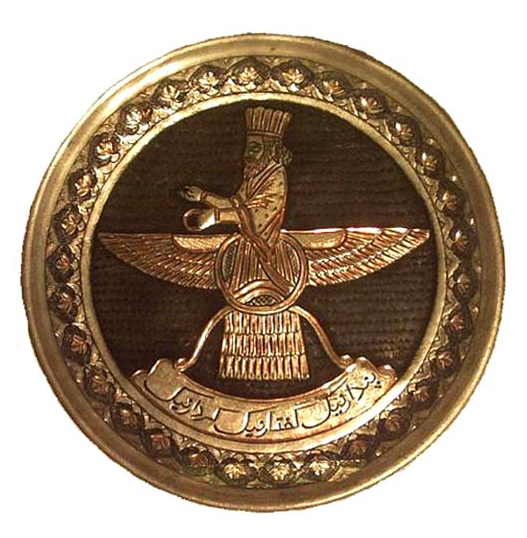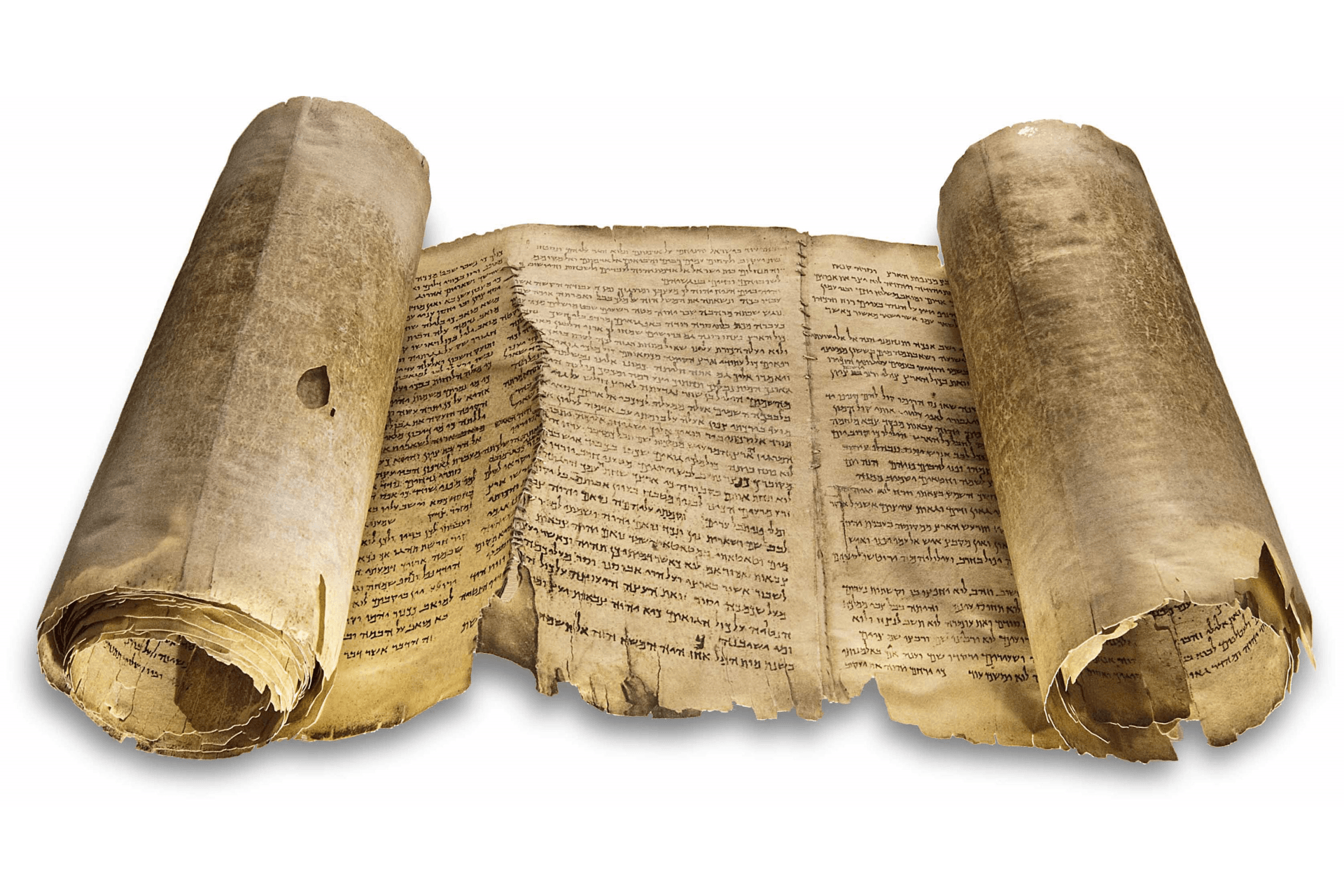
Over mankind’s history, GOD had sent men and women who, in different forms and in different proportions, brought HIS truth and HIS purpose. Between those, here are some of them with a small biography.

Abraham,
which migrated from the city of Ur (important Sumerian city that was one of the cradles of the Sumerian’s intellectual and religious development. The Sumerians, inventors of the cuneiform script, builders of wonderful temple-towers also known as zigurats, gave introduction to a legal system and to the evolution of animism to an overwhelming mythology) to the Mediterranean, in Canaan and developed Hebrew (influenced by Semitic languages), gifted with an advanced knowledge to his time, he started to transform the constant polytheism in the Sumerian culture to an assertive monotheism. Abraham enjoyed a bigger intimacy with the CREATOR (reports show him seeing and speaking with GOD), which he knew as EL SHADDAI, in a reference to EL, the Canaanite HIGH GOD. Abraham transmitted this culture to his descendants, to whom GOD said that they would be like mermaids on the sea and would spread through Earth. This culture involved the worship of only one GOD, the utilization of altars (made of rock) on worshipping, gratitude sense towards GOD (through offers) and the understanding that the proximity with GOD make us strong and prosper.

Akhenaton, Akhenaton, initially known as Amen-Hotep IV (or Amenofis IV). History accredits to this personality the institution of a monotheistic religion between the Egyptians, in an attempt to remove the politic power from the priests’ hands, mainly those of the god Amon from the city of Tebas, which were removing the focus the original divine plan. So, when he was approximately 30 years old, Amen-Hotep IV instituted the god ATON as the only deity to be worshipped, being the pharaoh himself the only representative and mediator of this deity, reason by which he became known as Akhenaton. The monotheism, the mythical travel, the understanding of the afterlife regarding the manifestation of GOD in his creation, asides from hygiene and personal care, are some of the highlights brought by Akhenaton in his reign.

Moses, Moses, born Jewish, but raised in the pharaoh’s palace in Egypt, managed to advance in knowledge and study, for, in one side, he had the religious Jewish culture (existent approximately 600 years since Abraham) and, in the other side, the religious Egyptian culture in its apex (post Akhenaton period). Having escaped from Egypt when he was 40, Moses, after leading the Jewish exodus, was the main Jew lawmaker and one of the main religious leaders. He have left a legacy which encompass the Ten Commandments, over 600 laws that served to keep the physical, material and spiritual integrity of the Hebrews, precepts of worship to the unique GOD known to him through YHWH (the I AM, or JEHOVAH by establishing a sacerdotal caste, between other deeds. Some of his scriptures and registries can be found in the Five Books and in the Psalms.

Zoroaster
or Zarathustra,
Persian (older Iran) prophet, returned from his monastic life in sacred caves and received the divine revelation through seven visions or ideas. Between those there was the one of eliminating the polytheism and converting the people to the monotheism. For ten years he was ignored and prosecuted having as his only follower his cousin. When he was 40 years old, Zoroastric religion became the official religion of the kingdom of Persia. Asides from reforming the religious system bringing the monotheism, he demonstrated, through his life, that man is also capacitated by GOD to realize miracles

Siddartha Gautama, o Buddha, son of an influent director of an aristocratic republic, when he was 29 years old, left his life complete of riches to live as an ascetic. Practitioner of meditation, he imposed over himself severe austerities until he obtained a religious experience called by him as enlightenment. From this day on he started to be knownas Buddha, the Enlightened. Until his old age he promoted his teachings and conquered a great legion of disciples, monks and laymen. Between his great contributions there is the teaching regarding to avoid evil, make good and cultivate the mind towards to finishing the suffering cycle and awaking to the ultimate reality, the Nirvana. Something that is also exponential is the comprehension of the Four Noble Truths, connected to the observation of a feeling of non satisfaction inherent to its own existence, which can, however, be transcended through the practice of the Noble Octuple Path.

Lao Tsé was a great Chinese philosopher and alchemist. He was the introducer to the pantheist thinking, which relates all the universe to GOD. His main conviction was that GOD is present in the world and reigns everything that exists in it. The divine can be experimented as something personal or impersonal. The pantheism puts the mortal towards reaching the unity with the divine. His most promoted script is the Tao Te Ching, composed of 81 small poems.

Mahavira, or Vardhamana, when he was 30 years old, dedicated himself to ascetics processes until reaching the illumination (being considered the last Tirthankara). In a close time to Siddharta Gautama, Mahavira promoted the truths that he started to live, and the beliefs introduced by ParshvaNatha (the anterior Tirthankara) which consisted in: non-violence, avoid the lie, don’t appropriate of what was not given and don’t give in to material possessions. He believed also in Karma and the process that permits the liberation of the karma particles of a soul called “nirjara” and included practices such as the fasting, the retire to isolated places and meditation.

Kung-Fu-Tze, or Confucius, when he was 30 years old, after a very intense life and after a great peregrination through many realms, conducted his life in a very exemplar way (in his words and actions), preaching harmony through recovering ancient values that were forgotten at that time. Being those: the altruism, courtesy. Integrity, knowledge and moral wisdom, fidelity and honor.

Jesus, the Christ, in his early thirties (after his baptism), retired, when, between other things, prepared to promote his teachings, preaching the good news that he had received by GOD. Among other deeds, he firmed himself into showing the mistakes and exaggerations committed by the Judaism (his Religion) and emphasizing the necessity of basing one’s thoughts and actions in two Commandments only: Loving GOD and the neighbor as oneself. Despite of his few years of ministry, he managed to leave a legacy. He reinforced the necessity of loving only ONE GOD and conducting our lives into mirroring HIM. He showed that god is very close to us, compared to what was preached at the time, and that the repent of carnal attitudes led to salvation. He showed also that through HIM it was possible to realize impossible things or miracles.

Paul of Tarsus,
or Apostol
according to historians, received the calling that transformed him from a Christians prosecutor into one of the most influent promoters of Jesus’ teachings in his early thirties. Having studied Law (in the school of Gamaliel in Jerusalem), he was also a Pharisee and a man of a high intellect, who had promoted as anyone did before the teachings of Christ inserting wise and powerful words to it. His scriptures correspond to 14 of the 29 books existent in the New Testament. One can highlight the respect and the knowledge of different religions and sects existent in his time.

Muhammad, in his early forties, made a “spiritual retirement” where he received the incumbency of, as a prophet, to restore the teachings of the Christianism and Judaism which were twisted. By this, it was given start to the Islamism, which means Submission to GOD, which is pronounced ALLAH in Arab. In this period, religions were involved in many practices that departed themselves from GOF, between them, idolatry. Through this, Muhammad reinforced the existence of only one GOD, the existence of Angels (Although they should not receive any kind of worship), the truth existent in the holy books (Torah, Judaic, Psalms, Gospels and, obviously, the Quran). He said also that our life is designed by GOD and in the end of life everybody will be evaluated by its actions.

Guru Nanak, as he is known, had all his childhood turned to studies and praying, until, in his adulthood, he traveled through many places, preaching to Hindus and Muslims. To him, religion should unite people, not causing divisions. He instituted the belief in only one eternal and with unknown form GOD, creator of everything and that should be target of devotion and love by mankind. He teaches that men depart from GOD by their egocentrism, through elevating their carnality. The breach with the carnal and the egocentrism takes to liberation (samsara), which, to him, means the unity with GOD. Among other principles, one can highlight: keeping GOD in mind every moment, reaching maintenance through honest labor and the practice of charity.

Martin Luther,
when he was 34 years old, after an exceptional academic career, preached the 95 thesis at the Castle Church’s door, condemning, among other things, greed, paganism (through the abusive usage of images) and the sell of indulgencies (the forgiving of sins partially or completely). He believed that the Catholic Church, with these and other practices, became responsible for the promoting of many errors regarding fundamental theological principles which were setting apart man from GOD.

Mirza Husayn Ali, or Bahá'u'lláh, considered the “imame”, the expected leader by the adepts of babism, brought again the monotheism to the spotlight, inserting his teachings in the Holy Book. To him, GOD is transcendent and incognoscible and his essence manifests itself in the creation. He understands that he have found the synthesis of all religions which unite in an original purpose. Mirza recommends, among other things, monogamy, vegetarianism, and the uninvolving with war or politics.

William Miller was a great Bible scholar and Pioneer of the Adventist movement. Since he was very young he believed in the Bible and other inspired books. After his wedding he became adept to the Dedeism. When he was 34 years old, after having watched in his local church a strong preaching, he started to study the Bible recklessly. He believed that, if the Bible was really the word of God, it should explain by itself its own contradictions. To accomplish that, he studied intensively using only one biblical concordance, without advancing a single chapter without completely understanding it. Finally, in 1831, letting go of his shyness, he felt himself being called to promote his discoveries. Many people and leaders of many religious confessions from America became adepts to the movement called Adventism or Milenarism, for they expected that the return of the Messiah would happen soon.
Added to the movement that gives rise to Adventism is the prominence of Ellen Harmon White, who, with her more than 2,000 visions and tens of thousands of written pages and numerous articles, had and has a strong influence on the Adventist Church's pathways, organization of the church, health councils, especially in the abstinence of tobacco and alcohol, in the recommendations of a balanced life, emphasizing the preventive aspect of health and care with food. Ellen White advocated an education capable of developing the human being in all areas of existence and not only in the intellectual point of view.

When He was still 14 years old,
Joseph Smith Jr. became preoccupied over which church he should belong, besides, the conflicting lectures that he had heard from many minister from other religions just raised his uncertainty. So, he recurred to GOD regarding what to do. Suddenly, according to what he said, GOD appeared. In this encounter he was oriented not to belong to any of the existing religions, because all of them had gone out of the way. Years after, he received details of an old registry describing how God had took care the ancient inhabitants of the American continent. Soon after receiving the registry in tablets, Joseph Smith started to translate the text to English, which had turned out to be the Book of Mormon. Due to his teachings, he was prosecuted and killed shortly after by a crowd.

Alan Kardec, desde muito novo apresentava apreço por ciências e filosofia e mostrava muita facilidade de lecionar - tanto que aos 14 anos já ensinava aos seus colegas aquilo que sabia. Quatro anos depois se tornou bacharel em Ciências e Letras e foi um grande pedagogo. Tendo começado a freqüentar reuniões onde aconteciam alguns fenômenos tidos como diferentes, Alan Kardec aos 50 anos, dedicou-se à estruturação de uma proposta de compreensão da realidade com base na necessidade de integração entre os conhecimentos científico, filosófico e moral, com o objetivo de lançar sobre o real um olhar que não negligenciasse nem o imperativo da investigação empírica na construção do conhecimento, nem a dimensão espiritual e interior do homem. Essa proposta acabou por consolidar o Livro dos Espíritos considerado marco fundador do Espiritismo.
Still, within the spiritist aspect, we have another Envoy, this Brazilian, by name Francisco Cândido Xavier, or Chico Xavier. At the age of 22, he published his first book with 256 poems, and throughout his life he has psychographed more than 400 books and carried out works of a social nature of great relevance and profound altruism. The legacy of the medium overcomes religious barriers and he is recognized by many as the greatest "spiritual leader" of Brazil, being one of the most admired and acclaimed personalities in the country besides having his works translated in several languages. At age 71, he was nominated for the Nobel Peace Prize.

Charles Taze Russel was an avid student of the Bible. Since he was in a very young age he had the will of serving GOD, but the religious doctrines which he faced caused him great discomfort, specially the ones regarding hell and predestination. This, among other things, crumbled his faith. When he was 17 years old his faith was restored, and, with it, the desire of spreading his biblical knowledge, joining to others that also shared his desire and ideas. When he was 21 years old, he published a small book in a reasonable amount and conducted it to a group called “Bible Students”, later, known as “JEHOVAH Witnesses”.

Henry Steel Olcott dedicated his early years to a search of intellectual enrichment, becoming a journalist, lawyer and writer. In his adult age he started to follow recklessly the Spiritist Doctrine and followed a well known journey on propagation of Buddhism with emphasis on Sri Lanka, where he founded many schools. Uniting himself with Helena Blavatsky
he founded the Theosophic Society and promoted the Occultist Renaissance. With his motto “there is no religion superior to the Truth”. He began to promote encounters approaching different themes, encouraging the study and the investigation of religion, philosophy, science, and not explained laws of Nature.

Rudolf Steiner,
with varied interests ranging from occultism to agriculture, architecture, art, drama, literature, mathematics, medicine, philosophy, science and religion, broke with Theosophy mainly because it did not give due place to Jesus Christ and to Christendom, and devoted his last years to Anthroposophy, including Hindu concepts such as karma and reincarnation. Steiner, among other works, dedicated himself mainly to the fields of Social Organization, Agriculture, Architecture, Medicine, and Pedagogy; also Pharmacology and in the treatment of children with Down Syndrome, within the Curativa Pedagogy.

Masaharu Tanigushi studied English literature and occidental and oriental philosophy, which led him into reflecting on the problems of mankind. When he was 36 years old he received a revelation which conducted him to create his book “The Truth of Life”, in which he presented a very attractive doctrine which says that life can be harmonic and joyful in all meanings, to accomplish this, one must nourish good feelings and reflect them into the world. One year later Seicho-no-ie was founded, which promotes this doctrine.

Meishu-Sama
or Motiki Okada, showed since his young age a very strong preoccupation with problems that affected humanity, bringing it suffering. This took him to investigate on the real health, prosperity and peace. When he was 45 he understood that he was in a great level of illumination, and wrote “Transition to the night age to the daylight age” founding, in sequence the World’s Messianic Church which aims to build a world revolved of truth, welfare and beauty, without disease, poverty or conflicts.

Since he was very little Yedidyah
had great familiarity with spiritual matters, many of them originated by his Christian education. At his 3,5 years he already was able to read parts of books containing biblical histories. When he was 11 he was propelled to represent his devotion to GOD through the baptism of water, the years that followed ended in a rich spiritual research and strong questioning on the doctrines and theories to him presented. Facing such dissonance and external factors, he almost doubted the existence of GOD and, wishing to understand his role, he traveled through a solitary trip by foot for over 1.100 km when he was 29 years old. In this trip he said that he had understood his mission completely: To connect all the fragments of truth, scattered and detained by many religions, sects and doctrines, influencing everybody into loving GOD in Spirit and Truth, loving HIM in his most complete form.











